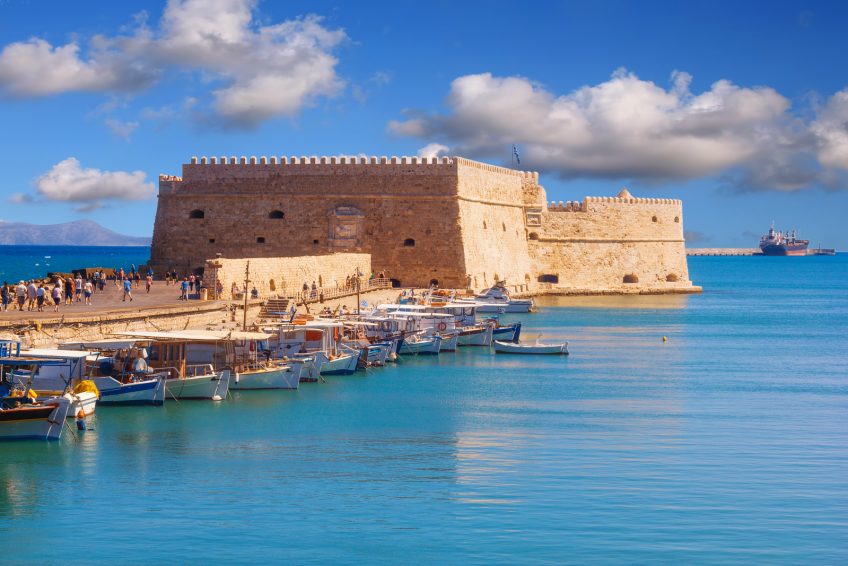
The vigilant guard of Heraklion stands at the entrance of the Venetian harbor, at the end of the western pier, eternally gazing at the Cretan Sea. Each historical period had a new name to give to the emblemetic sea fortress; it has been called Rocca a Mare, Castello a Mare, Castel di Candia, and Su Kulesi (Fortress of Water). The last Turkish name led to today’s Koules. The Venetian castle was built at the beginning of the 16th century (1523 – 1540), replacing a tall tower built during th efortification by the Venetians. For its construction, boulders were used from the island of Dia and huge sums of money were made available by the Kingdom of Crete, the central treasury of Venice and individuals. Outside, on the main sides of the fortress, there is marble embossing depicting the winged lion of St. Mark, a symbol of Venice. Today, Koules is open to visitors and regularly used for various cultural events.






